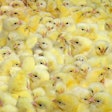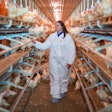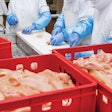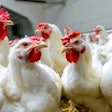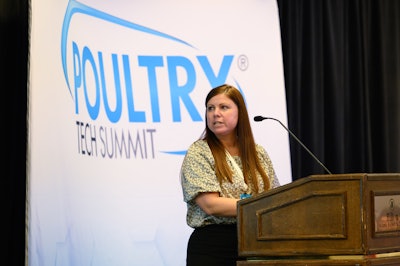
A non-invasive coccidia monitoring system that measures oocysts per gram (OPG) patterns can help producers manage the disease and better understand the responsible bacteria, Eimeria, in the production environment.
According to Meghan Bowman, Product Manager, Ancera, coccidia investigations are typically reactive or triggered by an adverse event, such as a drop in production performance. It can take weeks for management to intervene after performance losses, causing financial loss for producers, she explained at the 2023 Poultry Tech Summit.
“Evaluation of volatility, incidents and trends adjacent to OPG can be quite powerful,” she said.
The platform uses microfluidics, fluorescent microscopy and computer vision to quantify the oocysts present in fecal samples. Then, the system correlates production outcomes by taking historical and modelled production data combined with OPG data to produce predictive outcomes.
The data is aggregated and the results are displayed on a mobile app that shows a near real time snapshot of coccidia performance at specific flock ages as well as complex, farm and house-level insights. When viewing the results, the color green indicates the amount of Eimeria detected is normal and orange indicates the parasite population is outside of the expected range.
Bowman said that as producers start to build patterns and correlate them to outcomes, the system can identify risks sooner.
The platform can help producers answer important questions such as:
- How is coccidia performing across my complex?
- Is coccidia contributing to performance volatility or trends?
- Am I on the most cost-effective coccidia program?
- Did I make the right change or intervention?
How it works
After producers collect fecal samples, the samples are shipped overnight to Ancera’s laboratory. Microbial quantifications and computer vision algorithm counts are completed, and images are taken. Then, the results are delivered to the producer through the mobile app.
Producers can take the results to their veterinarians to make production adjustments approximately six to eight weeks earlier than the current industry method.







